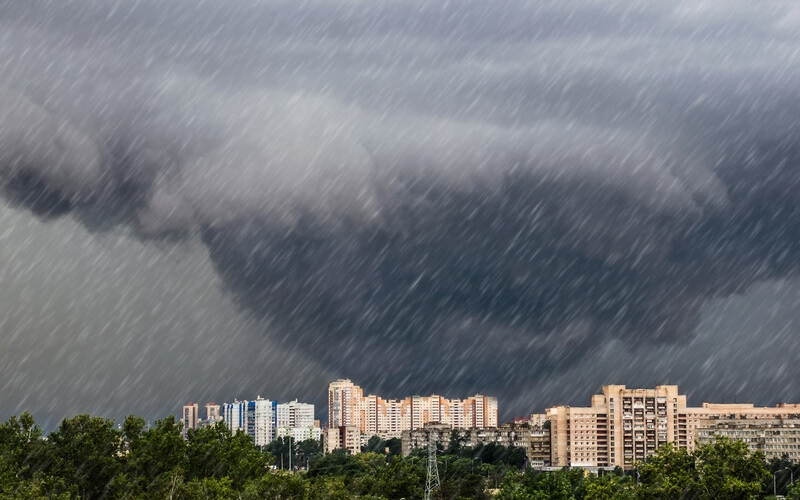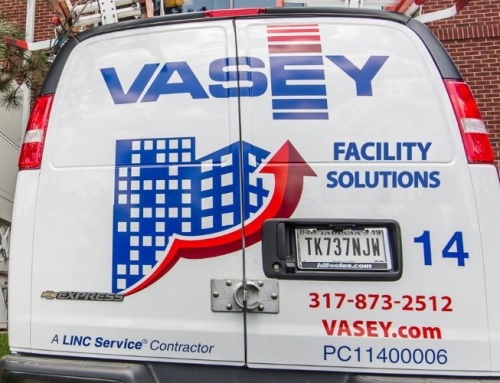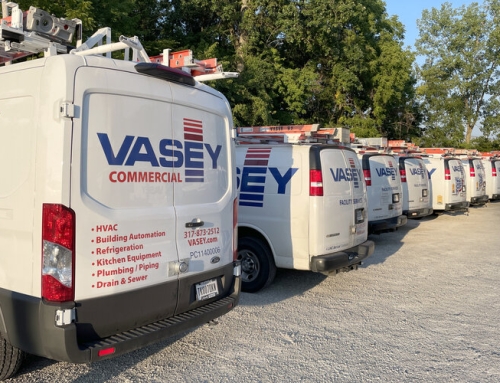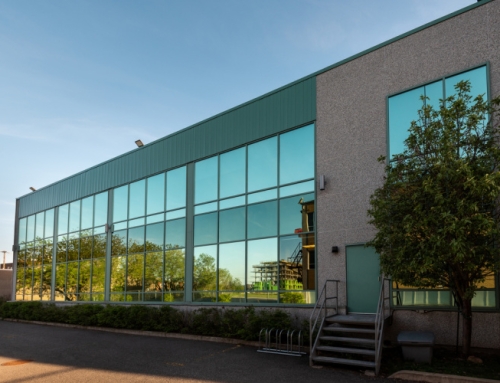Did you know when airborne cottonwood blooms make their way to your condenser coils, they can create significant air restriction? If unattended, the damage will impact your air conditioning the entire summer. Blocked or clogged condenser coils decrease your air flow efficiency by 25% or more which leads to higher cooling bills. Overtime, the overtaxed compressors become damaged forcing you to make costly repairs.
In addition to cottonwood, dirt also reduces your system’s efficiency because it creates a barrier between the coils and refrigerants, making it harder for the air conditioning system to eliminate heat.
In Indiana, it’s not unusual to experience temperature swings. HVAC systems are especially vulnerable to hail damage. Sometimes hailstones are large enough to dent the fan motor and blades, causing them to wobble. The fan will still run, however the misaligned blades will cause more damage over time. A blade that is cracked or bent by a hailstone can cause a complete system shut-down.
Hail damaged condensers can reduce efficiencies as well as impact thermostat wiring and the refrigerant tubes. Minor damage can be repaired but coil replacement is needed for extensive damage.
Before you switch the thermostat setting to cooling in your facility, you need to have a qualified technician (like VASEY) perform these basic maintenance tasks on your HVAC System.
Clean Outdoor Condenser Units
To extend the life of your commercial HVAC system, it’s important to regularly clean your outdoor condenser units. It’s recommended to take off the cabinet covers for your outdoor condenser units and give them a good washing.
Duct Cleaning
One of the best things that you can do in the springtime is to get your duct work completely cleaned. This will help to prevent mold growth, bacteria, and other build-up inside of your ventilation system.
Replace Used Air Filters
It’s best to replace all the air filters on your HVAC system in the spring. This will ensure that your indoor air quality remains high. It also allows your HVAC system to work more efficiently circulating treated air throughout your facility.
Inspect & Clear Drain Lines
Your cooling system works to remove both heat and humidity from the air inside your facility. Over time, algae, hard water scaling, and other pollutants can end up partially or fully blocking your condensate drain. It’s important to remove any blockage in the condensate drain and any build-up within the drain lines.
Inspect Refrigerant Lines
For your system to work properly, it needs to have refrigerant moving freely through copper lines in and out of your building. Be sure to check these copper lines to see if they have become damaged. Any damage can potentially allow refrigerant to leak out of your system. This can be dangerous and prevent your HVAC system from working appropriately. If you do notice any damage to your system, it’s important to contact a HVAC professional for a more detailed inspection.
A VASEY Guaranteed Lifetime Protection (GLP) Plan is the best way to safeguard your facility’s system from potentially costly conditions that occur throughout the year – especially in the spring.
Contact VASEY today at (317) 873-2512 to learn how we can assist you with your system maintenance.






